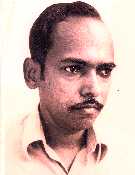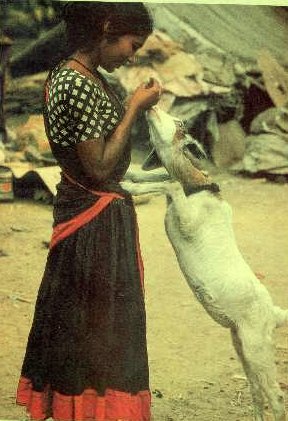

Home | Biodata | Biography | Photo Gallery | Publications | Tributes
Political - Socio - Economic-Surveys

 |

Home | Biodata | Biography | Photo Gallery | Publications | Tributes Political - Socio - Economic-Surveys |
 |
Four percent of the children of Tamilnadu belonging to the three to seven age-group suffer from Night blindness. Sixteen percent of the children in the same age-group have developed Bitot's Spot, a sign of Vitamin A deficiency. About seventeen percent have refractory errors--and are unable to read the third line of an eye-chart, using one of their eyes. Five percent of the children in that group suffer from Trachoma, a serious eye disease which is curable.
These are some of the findings of a sample survey conducted in January by students of the Department of Statistics of the Madras Christian College.
The dreaded disease Keratamalacia or the softening of the cornea leads to irreversible blindness in children suffering from Vitamin A deficiency and protein-calorie malnutrition. The earliest symptom of the disease is inability to see in darkness. Four percent of the children in the three to seven age-group suffer from Night blindness. In other words, in Tamil Nadu about two hundred thousand children are in need of urgent help if they are to be prevented from becoming permanently blind. Children in the drought-affected areas who suffer from malnutrition, must be tested for Night blindness and other signs of Vitamin A deficiency.
An early clinical sign of Vitamin A deficiency is the appearance of Bitot's Spots--greyish triangular raised patches on the white portion of the eye. Sixteen percent of the children of the three to seven age-group have Bitot's spots and they run a high risk of losing their eye-sight. The incidence is very high in Dharmapuri, Thanjavur and Ramnad districts where about thirty percent of the children have Bitot's Spots. It is also high in Kanyakumari (21%}, Tirunelveli (25%), and Madurai (23%) districts and in Madras City (23%). With the present drought situation in South Tamilnadu, more children are likely to be affected by Vitamin A deficiency and suffer permanent damage.
The incidence of night blindness and Bitot's Spots are a little more among the poorer sections of the population than among the well-to-do, but the difference is not very much. Even in educated families children suffer from Night blindness. The conditions of a child suffering from Night blindness will improve dramatically with better food and massive doses of Vitamin A in the form of injection or capsules. In the natural diet, milk, carrots, greens, mangoes and papayas are rich in Vitamin A.
Two percent of the children in our sample wear glasses. What we are mainly interested in our study is to find out whether there are more children who need glasses.
We have prepared eye-charts for testing the vision of all children, both literate and illiterate. The chart has to be read from ten feet and if a child cannot read the third line of symbols, then we classify the child as one having refractive errors. Each eye is tested separately. Thirteen percent of the children cannot read the chart with the left eye and thirteen percent with the right eye. In nine percent of the children both eyes are affected and in about seventeen percent one of the eyes is affected. One of the reasons for a high proportion of drop outs in the village schools may be due to defective vision and a massive program has to be launched to supply glasses to village children.
Five percent of the children in our sample suffer from Trachoma, a contagious disease which leads to blindness. Children with Trachoma have drooping eye-lids and inflammatory granulations on the inner side of the eye-lids. This disease can be cured by modern medicines. There is not very much difference in the incidence of the disease between the rich and the poor, and between the educated and the uneducated. Trachoma strikes them all.
More than two thousand children, born during the years 1963-72, and selected from four hundred towns and villages of Tamilnadu, were contacted for the study by about eighty students of the Department of Statistics of the Madras Christian College. The survey was organized by Professor Gift Siromoney with the assistance of Dr. C. Christudoss, the College Medical Officer. Student volunteers punched the data on to cards and processed the data using the IBM 370 computer at Madras